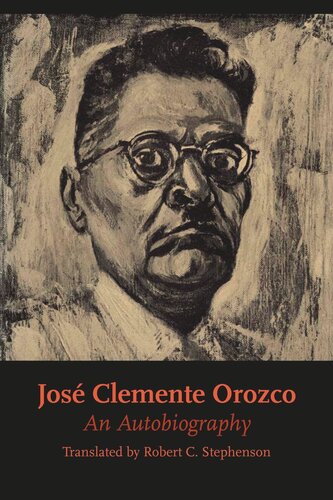

Most ebook files are in PDF format, so you can easily read them using various software such as Foxit Reader or directly on the Google Chrome browser.
Some ebook files are released by publishers in other formats such as .awz, .mobi, .epub, .fb2, etc. You may need to install specific software to read these formats on mobile/PC, such as Calibre.
Please read the tutorial at this link: https://ebookbell.com/faq
We offer FREE conversion to the popular formats you request; however, this may take some time. Therefore, right after payment, please email us, and we will try to provide the service as quickly as possible.
For some exceptional file formats or broken links (if any), please refrain from opening any disputes. Instead, email us first, and we will try to assist within a maximum of 6 hours.
EbookBell Team

5.0
30 reviewsThe artistic eminence of José Clemente Orozco (1883–1949) is such that he has been called “the greatest painter the Americas have produced.” In his Autobiography he also attains literary distinction. He is a writer who recounts the history of his period from a personal point of view and yet scarcely mentions himself. He is an observer who writes about the history of his country and of his country’s art, yet makes his own character implicit in the narrative. The character that emerges is charming. It is that of a man strong but retiring, sharply critical of what he disapproves yet generous in praise of what he admires, decided in his views but modest in his assumptions and given to understatement in describing his own activities, averse to war and political struggle yet eager for conflict of ideas, always dedicated to the welfare of humanity. Through the details of day-by-day living, he presents the panorama of the Mexican Revolution and of events in other parts of the world to which he traveled. His is a personal story of the Revolution, giving his reactions (as those of any common man) to the barbarities of war: “Insolent leaders, inflamed with alcohol, taking whatever they wanted at pistol point. . . . By night in dark streets the sound of gunplay, followed by screams, blasphemies, and vile insults. Breaking windows, sharp blows, cries of pain, and shots again.” Orozco’s ability, as a painter, to see the details and to sense the mood of a place is apparent in his word pictures of the places he visited: “After six in the evening Paris is an immense brothel.” “London was like the seat of a noble family which had been exceedingly rich but had lost its fortune.” “Old, old Montmartre [is] a moldering cadaver . . .” Orozco also makes some penetrating observations on art itself. Although he emphasizes individuality and freedom from tradition in art, he abhors unschooled art, especially such extremes as primitive Impressionism and other groups that lack instruction in the general principles of art, in technique, in theory of color, in perspective. He says ironically of the artistically uneducated: “Blessed are the ignorant and the imbecile, for theirs is the supreme glory of art! Blessed are the idiots and the cretins, for masterpieces of painting shall issue from their hands!” Orozco believes in education, not only for the artists but for their public. Taste in art can come only through understanding of the purpose and the techniques of art—through knowledge. Without training, public taste “mostly likes sugar, honey, and candy. Diabetic art. The greater the amount of sugar, the greater the—commercial—success.”